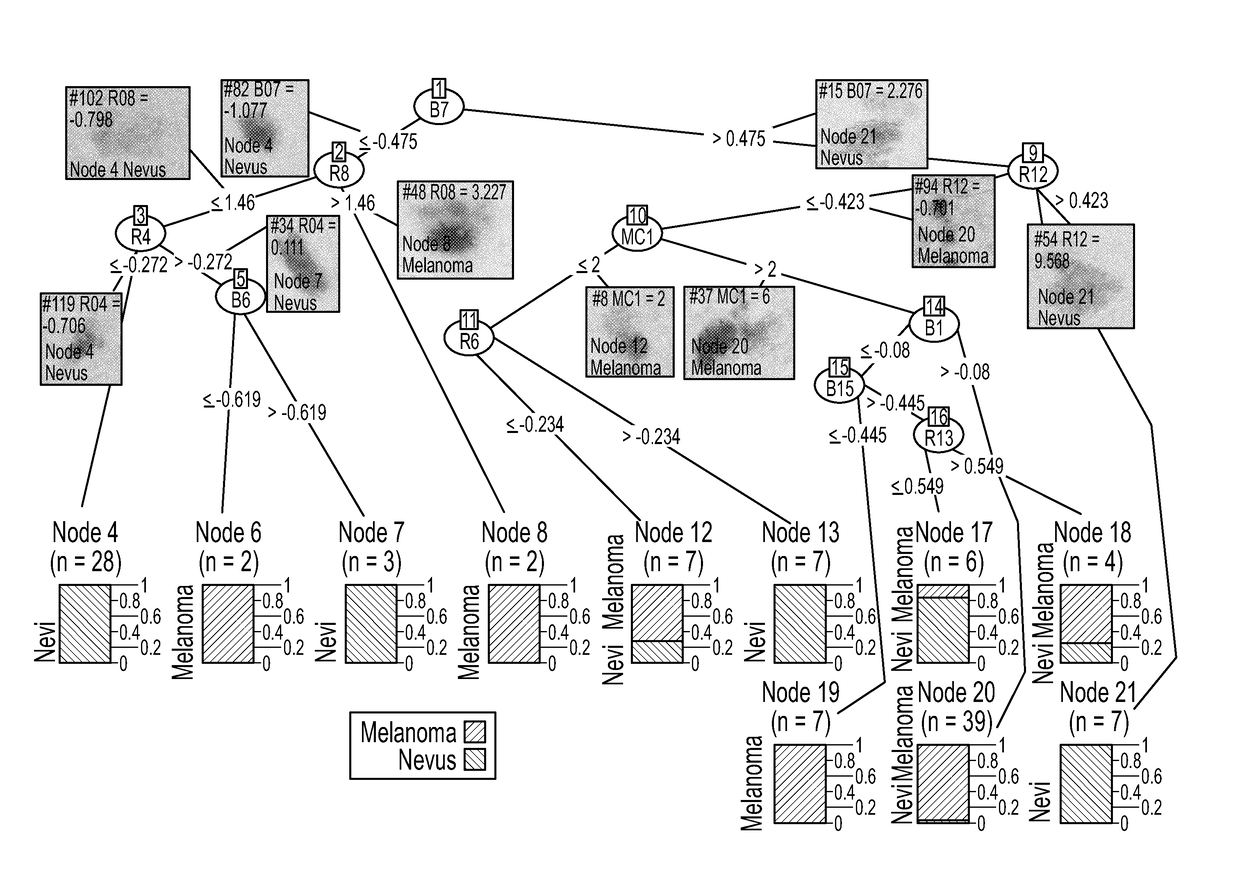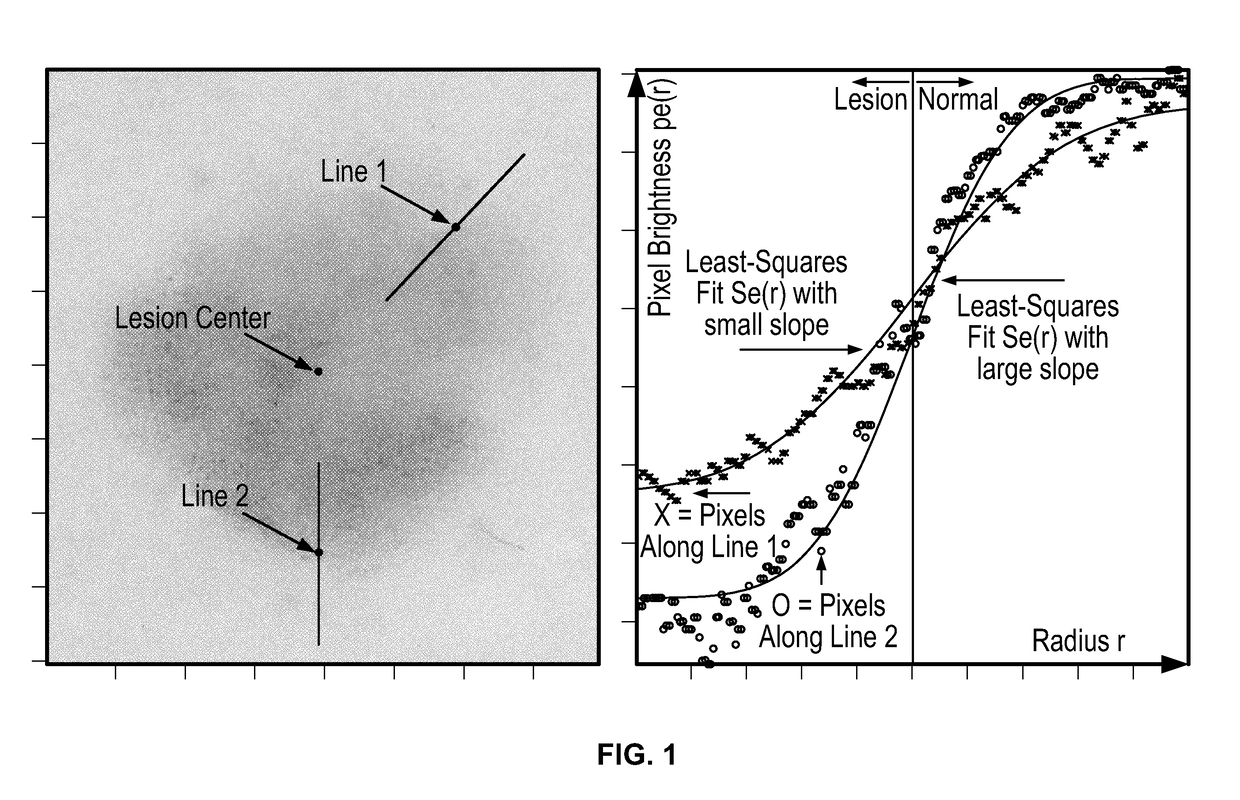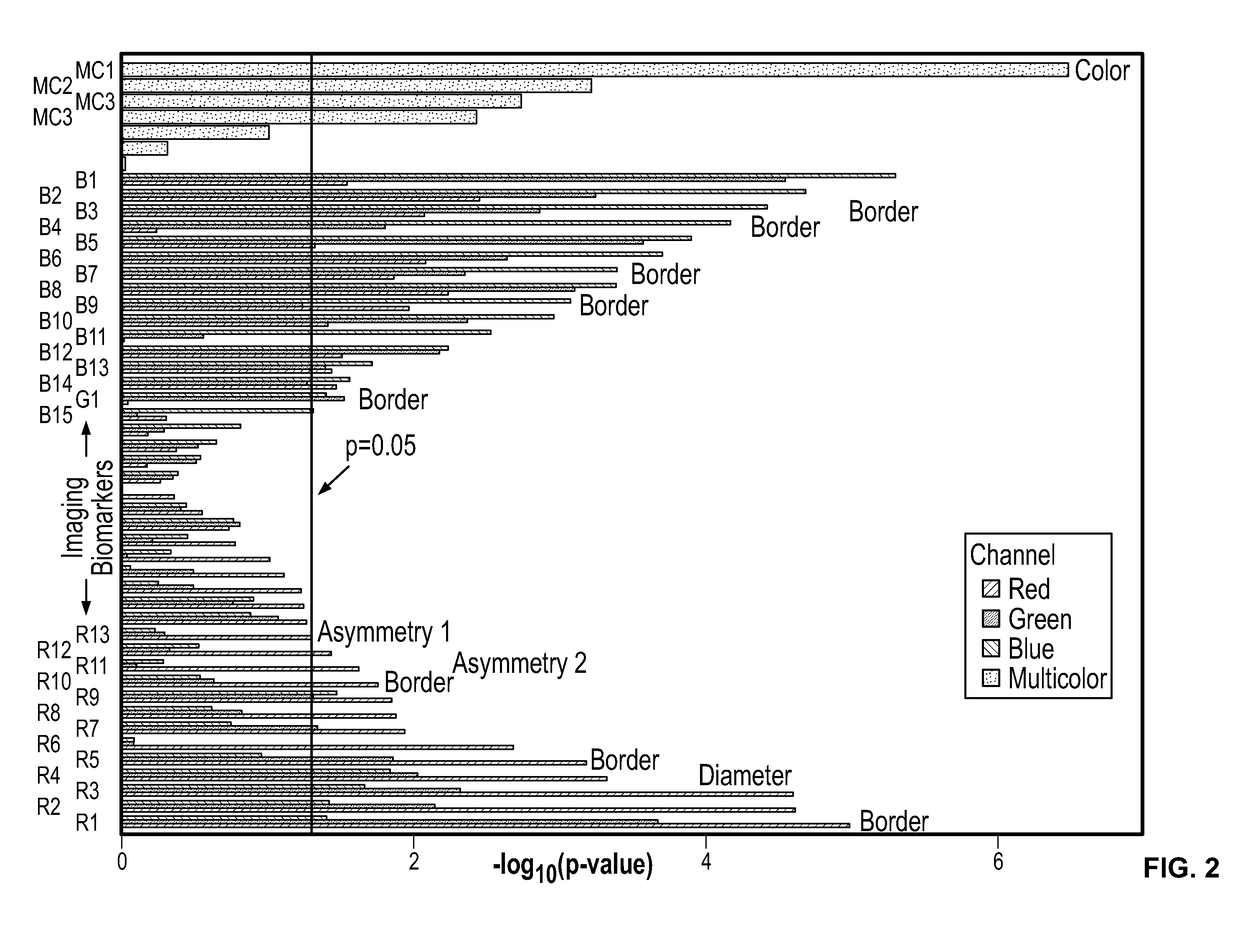Quantitative dermoscopic melanoma screening
a dermoscopic and melanoma technology, applied in the field of skin disease detection, can solve the problems of difficult decision on which lesions to biopsy, immense human and financial costs, and the most lethal skin cancer, and achieve the effect of greater sensitivity, specificity and overall diagnostic accuracy
- Summary
- Abstract
- Description
- Claims
- Application Information
AI Technical Summary
Benefits of technology
Problems solved by technology
Method used
Image
Examples
Embodiment Construction
[0016]One embodiment of the present invention is directed to a system including a camera, a mechanical fixture for illuminating the subject's skin and positioning the camera fixedly against the subject's skin, at least one processor adapted to perform the clock sweep algorithm, and at least one output device to display diagnostic information.
[0017]The camera is preferably a digital camera and may include a charged coupled device (CCD) sensor or complementary metal oxide semiconductor (CMOS), as known in the art. The camera may be a commercially available portable camera with an integrated illumination system or flash and a sensor array detecting Red Green and Blue (RGB) light. Alternatively an external illumination system may be provided and the camera sensor array may be adapted to receive “hyperspectral” light, meaning light divided into more spectral wavelength bands than the conventional RGB bands, which may be in both the visible and non-visible range. Details concerning operab...
PUM
 Login to View More
Login to View More Abstract
Description
Claims
Application Information
 Login to View More
Login to View More - R&D
- Intellectual Property
- Life Sciences
- Materials
- Tech Scout
- Unparalleled Data Quality
- Higher Quality Content
- 60% Fewer Hallucinations
Browse by: Latest US Patents, China's latest patents, Technical Efficacy Thesaurus, Application Domain, Technology Topic, Popular Technical Reports.
© 2025 PatSnap. All rights reserved.Legal|Privacy policy|Modern Slavery Act Transparency Statement|Sitemap|About US| Contact US: help@patsnap.com



